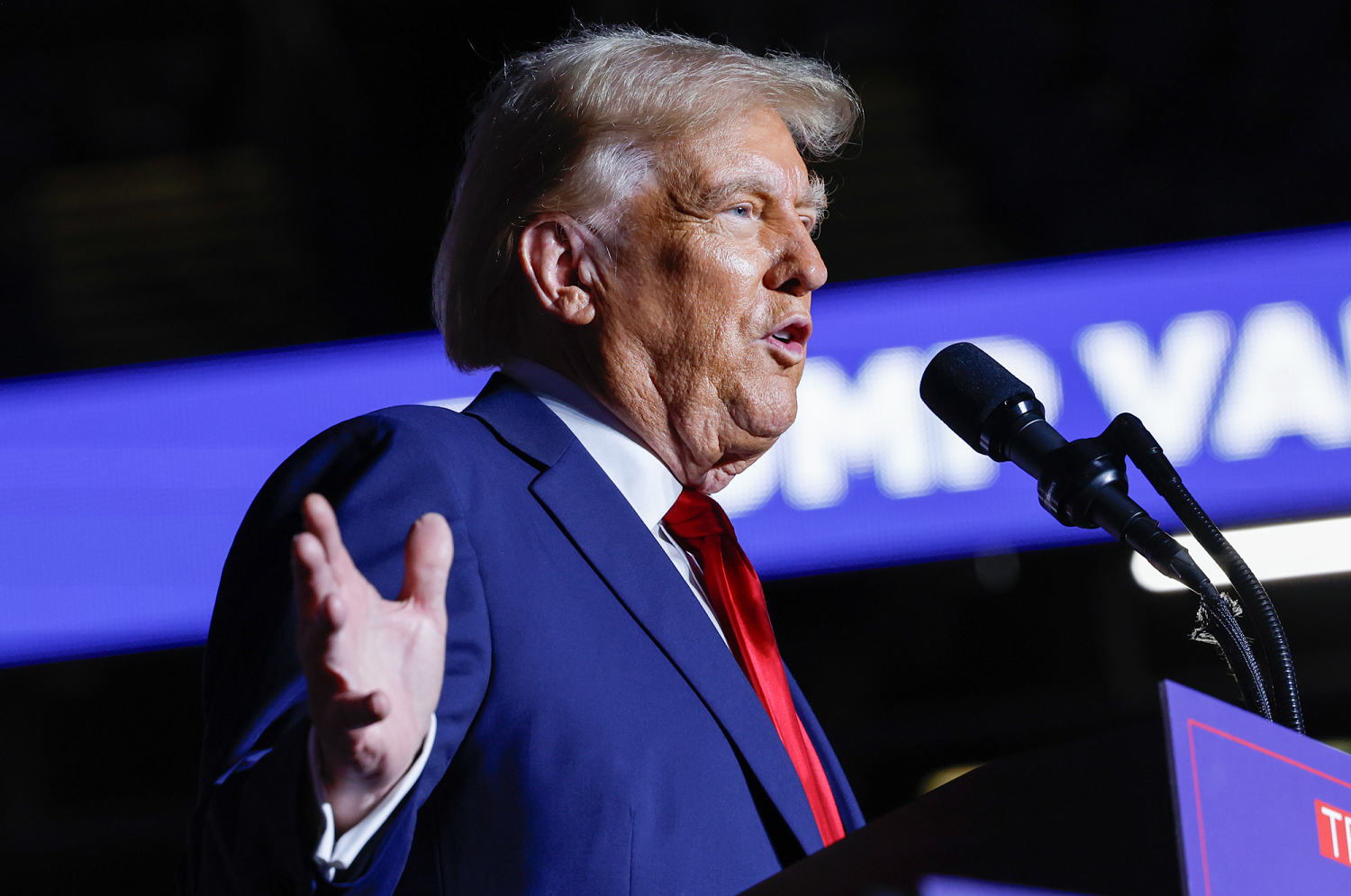
Former President Donald Trump is swerving off the battleground map this week to host rallies in New Mexico and Virginia — states that haven’t voted for the GOP nominee in two decades and where he lost by double digits in 2020 — and he is flirting with a trip to New Hampshire.
Trump heads to Albuquerque, New Mexico, on Thursday, with his campaign newly confident that he is in such good shape to beat Vice President Kamala Harris that he can afford to divert his focus from the seven main battlegrounds the two sides have focused on for the entirety of the race.
A Trump campaign official who spoke on the condition of anonymity to discuss strategy freely said the barnstorming of the final week is part of a strategy to expand the map and capitalize on what the campaign says are Trump’s diverse coalition and favorable positioning on the map and the broader momentum it claims it is seeing with the electorate.
“Trump has created a broad and diverse coalition by unifying the GOP, attracting independents and appealing to disaffected Democrats with his message,” the official said.
“The momentum includes states that have recently trended for a Democrat,” the source added. “All Americans understand that Kamala has broken our border, economy and ability to lead in the world.”
The question, with Trump speaking in a city a mile above sea level Thursday, is whether his campaign is high on its own supply or grounded in a reality that public polls have missed. In the vast majority of independent surveys in New Mexico, Virginia and New Hampshire in recent weeks, Trump has trailed by more than 5 points.
New Hampshire has been the closest, with one outlier poll in the New Hampshire Journal showing the race tied. But Trump and his team are seeing indicators that suggest he could break into unexpected territory with a wind at his back over the closing week of the election.
Trump is focused on driving turnout in the countdown to Election Day, the Trump campaign official said, and part of the strategy includes hammering his closing message to draw a contrast with Harris over the pillars of his closing argument: immigration, inflation and foreign wars.
A second Trump campaign official who was granted anonymity to speak freely said that if it is going to a state, it’s because the campaign sees movement there.
The Harris campaign didn’t comment.
There is no indication that Trump has all or any of the big seven swing states — Pennsylvania, Michigan, Wisconsin, Arizona, Nevada, Georgia and North Carolina — in the bag already. Trump lost in 2020 by less than 44,000 votes spread across Georgia, Arizona and Wisconsin. He will need to flip several of the battlegrounds to reach the 270-vote threshold in the Electoral College and win back the White House.
The decision to campaign outside of those venues — including a Madison Square Garden rally in deep-blue New York and a news conference in GOP-tilting Florida on Wednesday — has led some Republicans to infer that Trump is overruling the political pros on his team.
“There’s no chance that somebody who is focused on 270 electoral votes is going to Virginia and New Mexico,” said a senior official who served on Trump’s 2020 campaign team. “So Donald Trump is running his own campaign at this point. Period. Full stop.”
But current campaign officials say that Trump and his team understand the relative value of each visit to each state and that they wouldn’t be scheduling rallies in Albuquerque and Salem, Virginia, if they didn’t believe he had a chance to win those states.
In an appearance on Fox News on Tuesday, Trump political director James Blair said that polls have undercounted Trump’s support historically and that there are indicators that that could be the case again. Since 2020, states like Arizona have shown rightward movement that potentially bodes well for Trump, Blair said. He said Trump had also brought new people into the Republican Party, which polls may not be picking up.
Trump doesn’t have time to waste at this stage of the race, the second campaign official said. The races in those states can narrow quickly at the end, and they will be in play if there’s a polling error in Trump’s favor, this official said, adding that his campaigning in adjacent states — pairs such as Arizona and New Mexico and Virginia and North Carolina — can bleed over in both directions.
If Trump ends up in New Hampshire, this person said, it’s because his campaign sees him increasing his numbers in the Northeast at a time when New Hampshire is the most competitive of the New England states.
In another show of confidence, the Trump campaign recently dispatched former Democrats Robert F. Kennedy Jr. and Tulsi Gabbard to Omaha, Nebraska, sending them to the ruby-red state’s “blue dot,” which Joe Biden carried by more than 6 percentage points in 2020 and where recent public polls show Harris with an even more significant lead. Both spoke at Trump’s New York rally, and Gabbard joined Trump days earlier in North Carolina, a swing state.
The campaign is sounding a resolutely optimistic note.
“I won’t feel comfortable until the race is called; you always run like you’re 10 points down,” Blair told Fox News. “But by everything that’s measurable right now, it looks very, very good for President Trump.”






